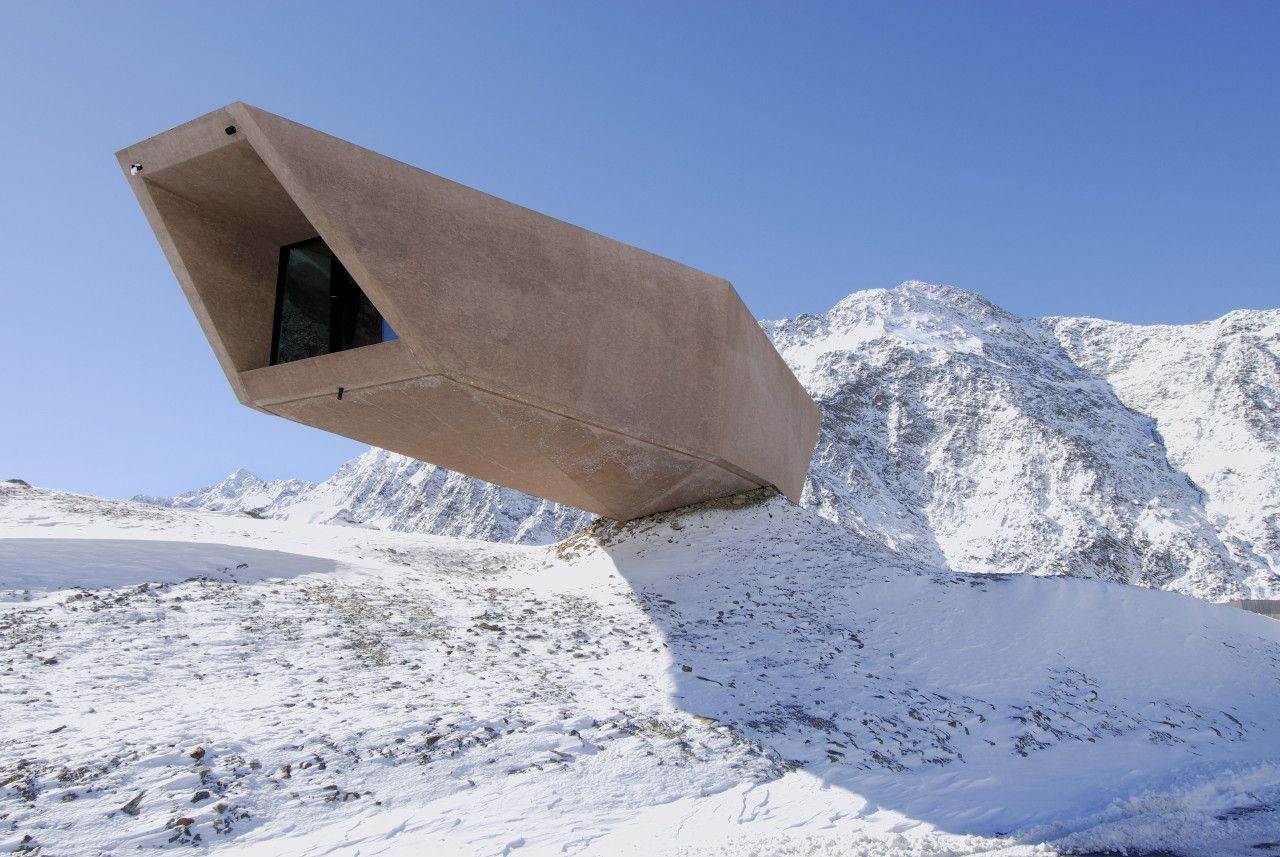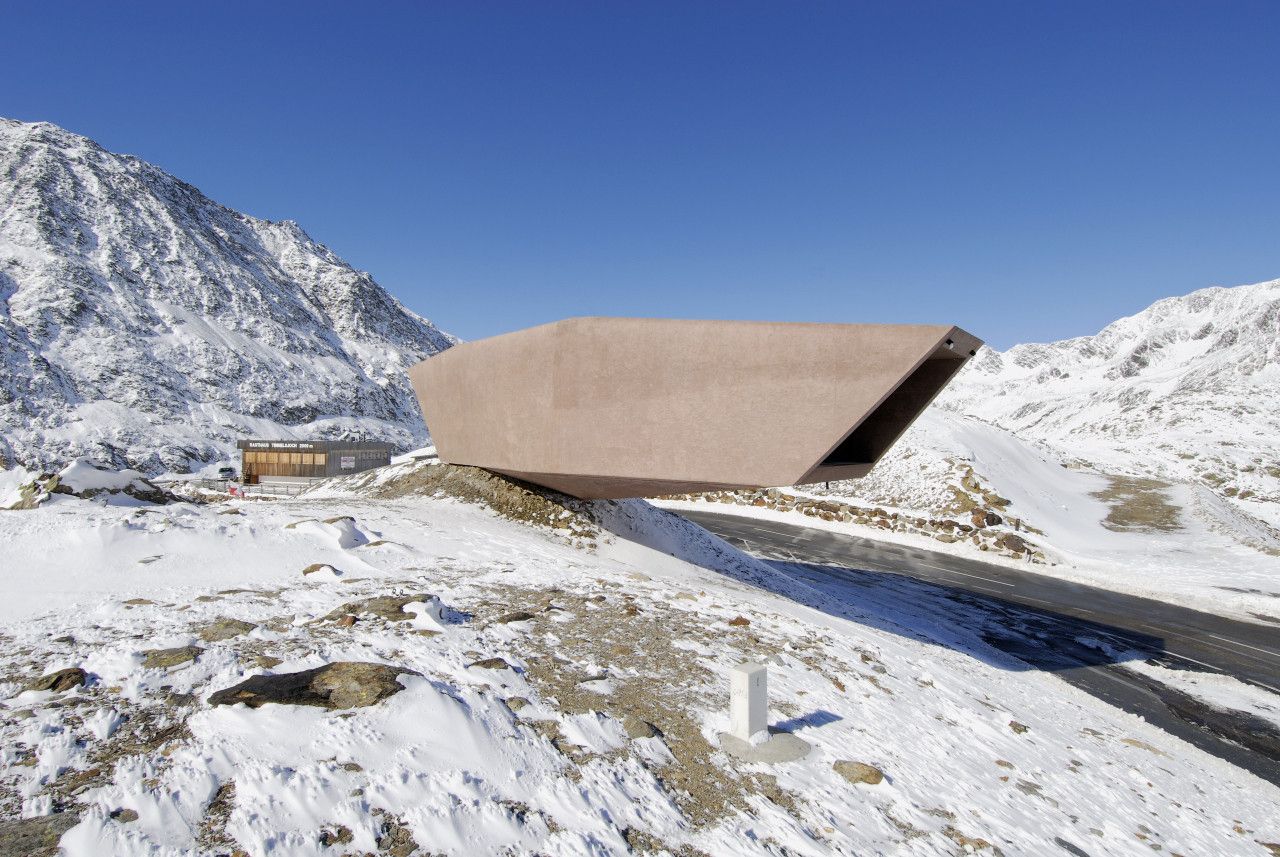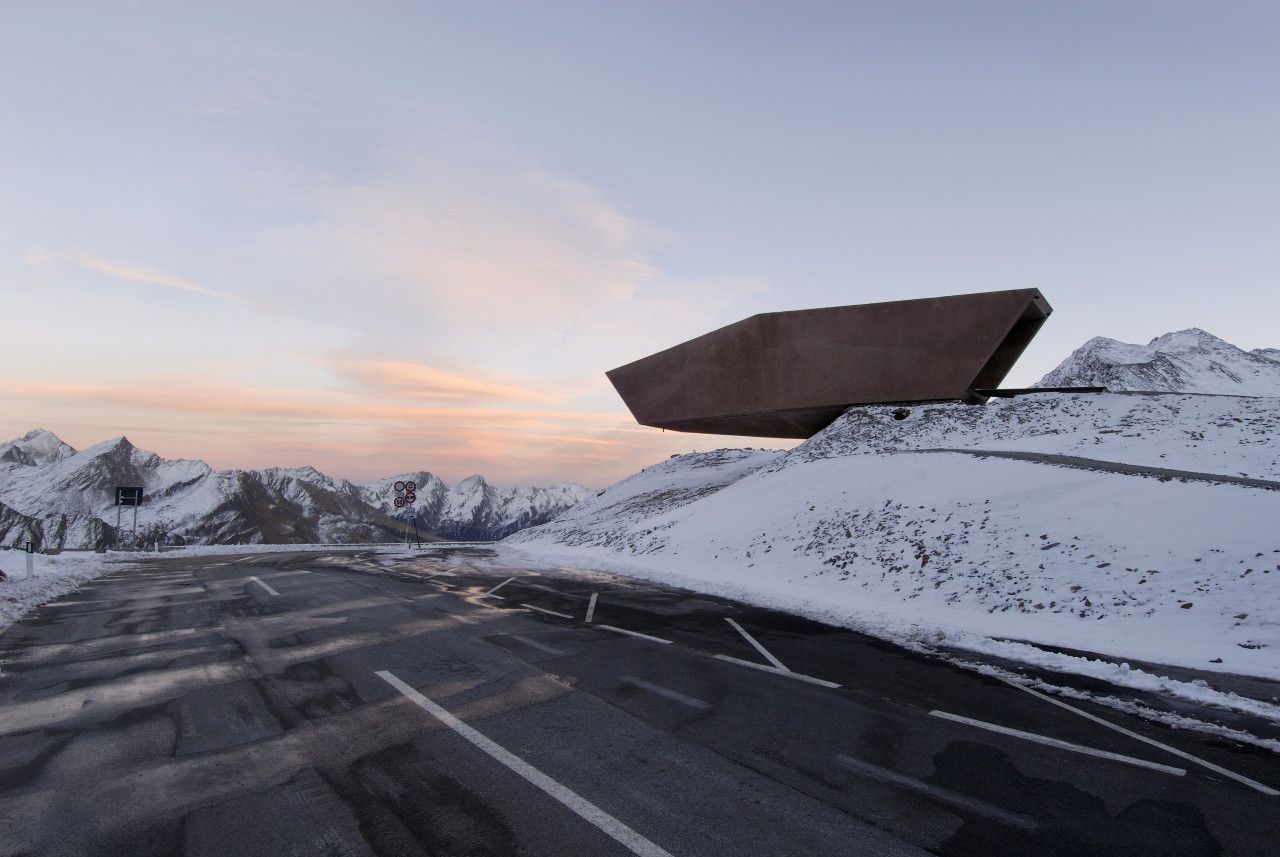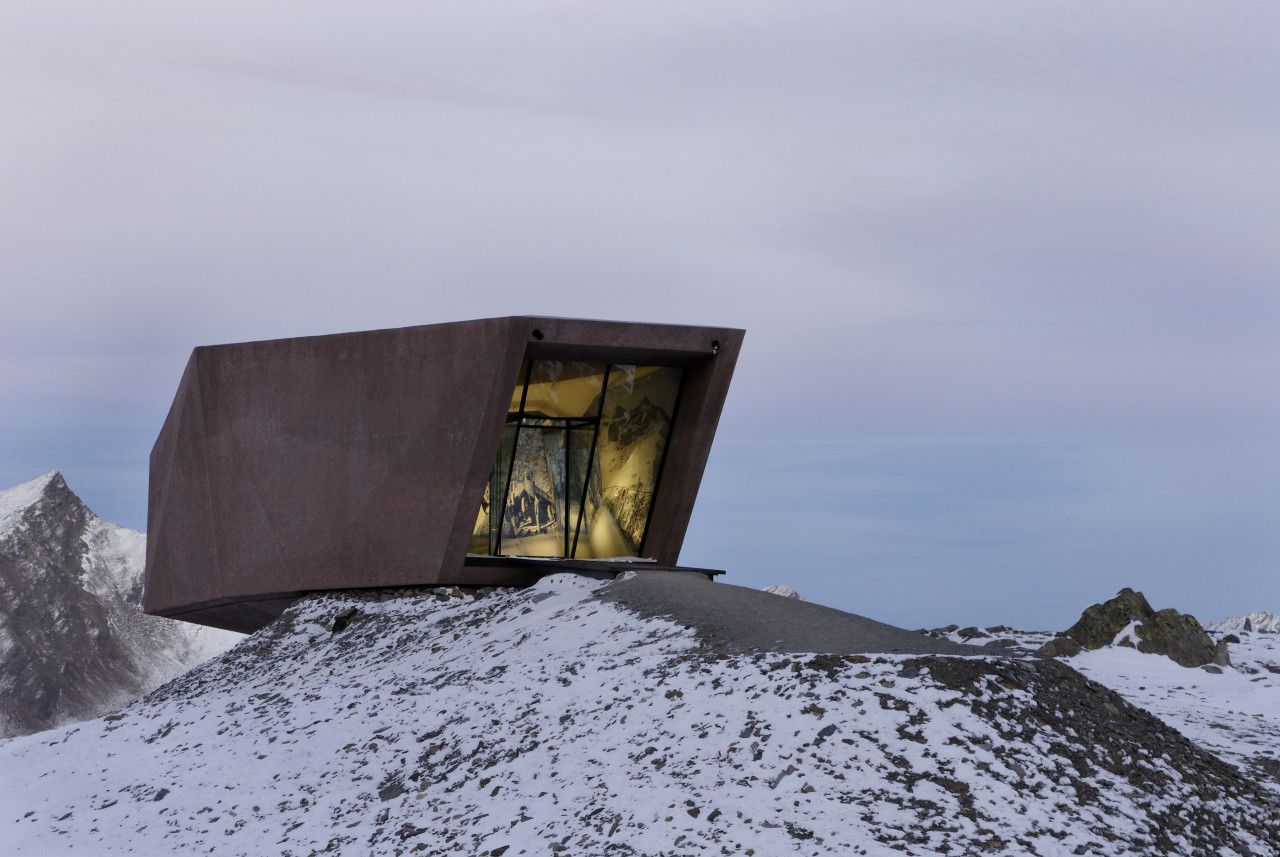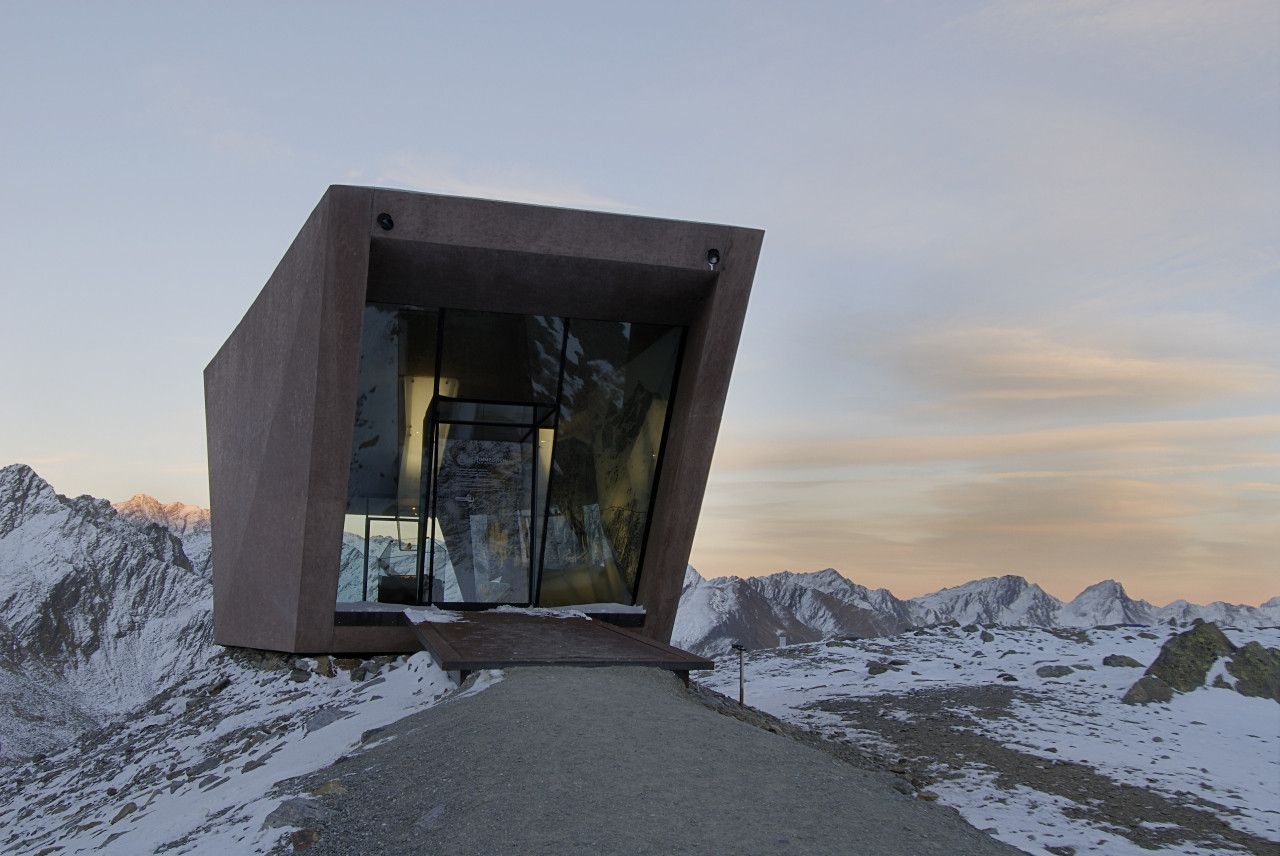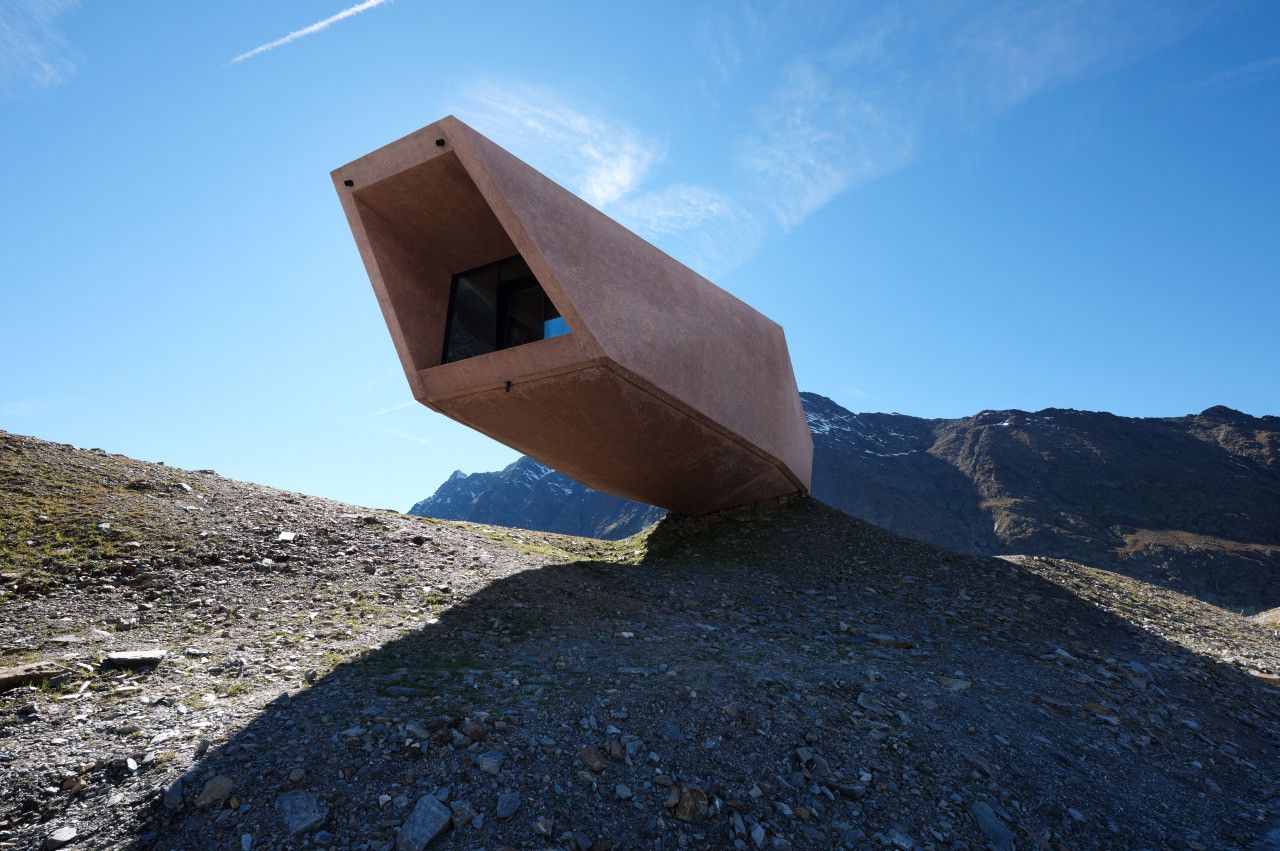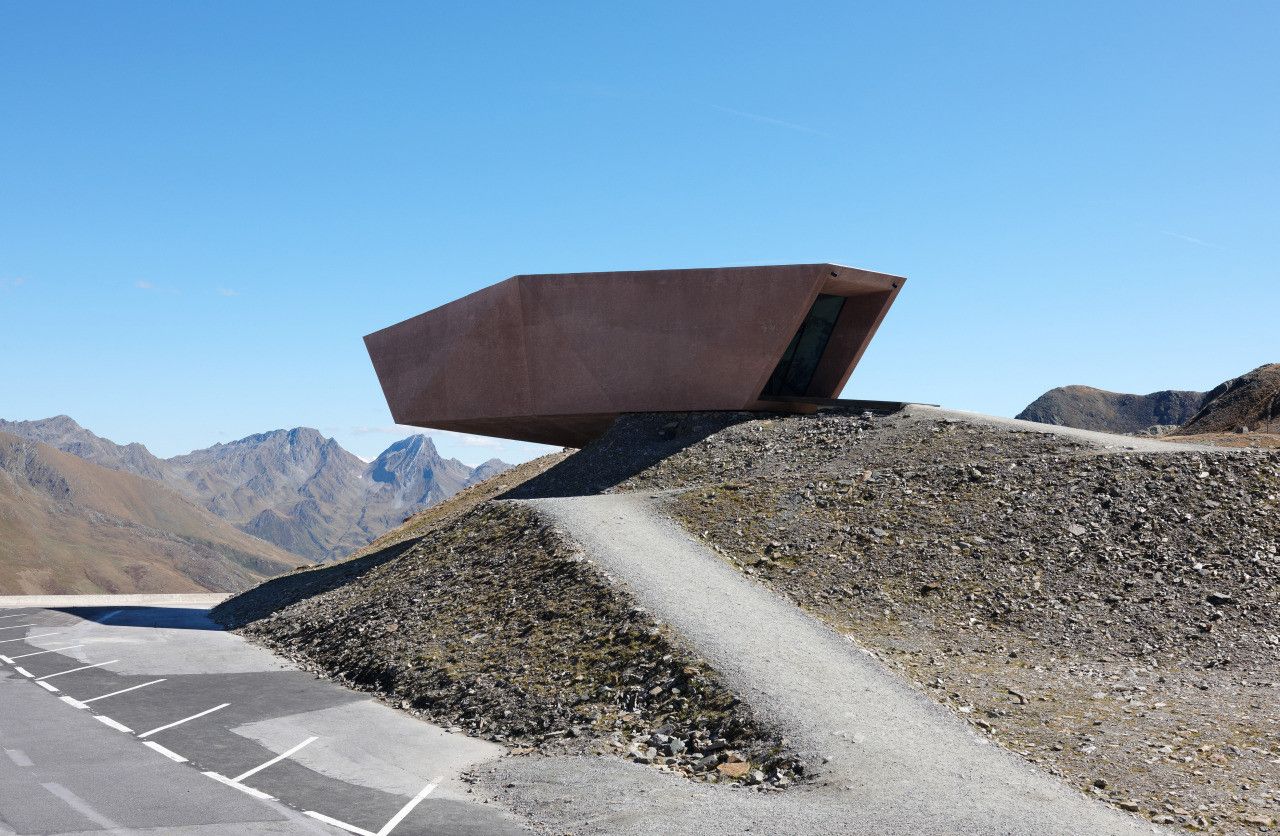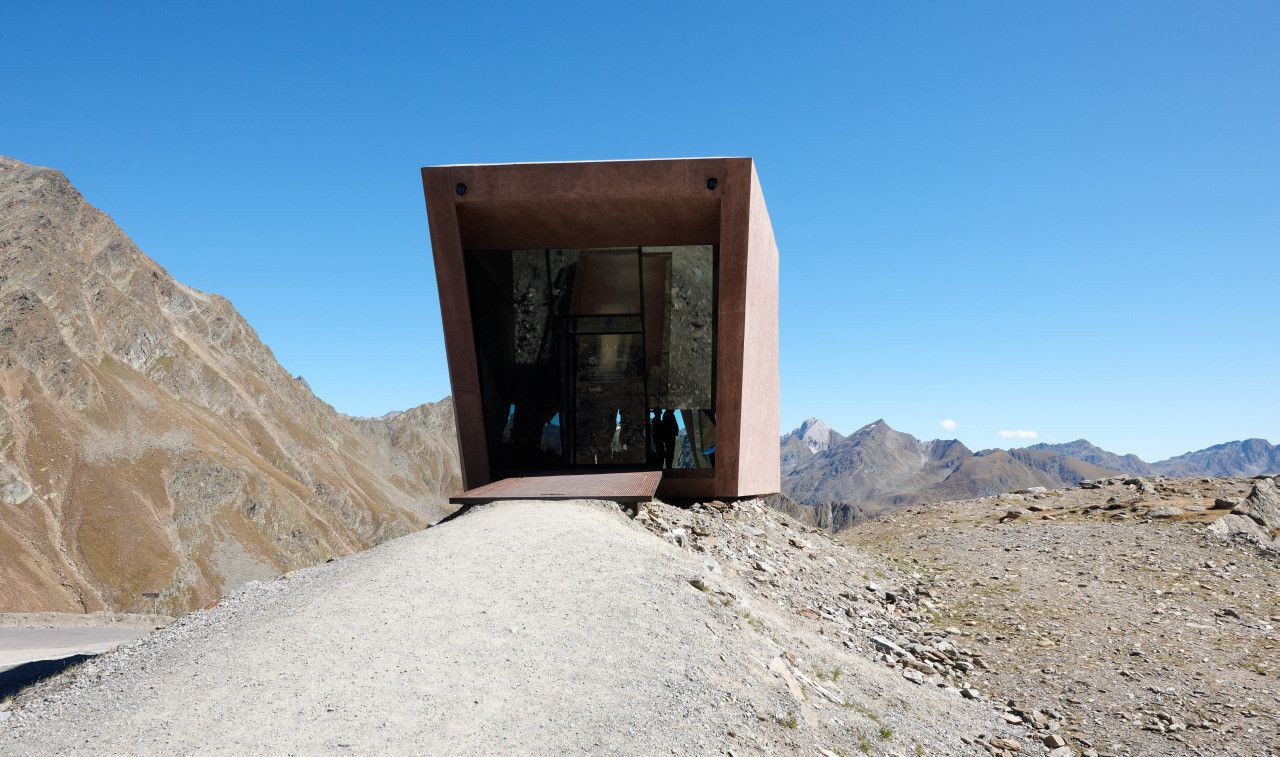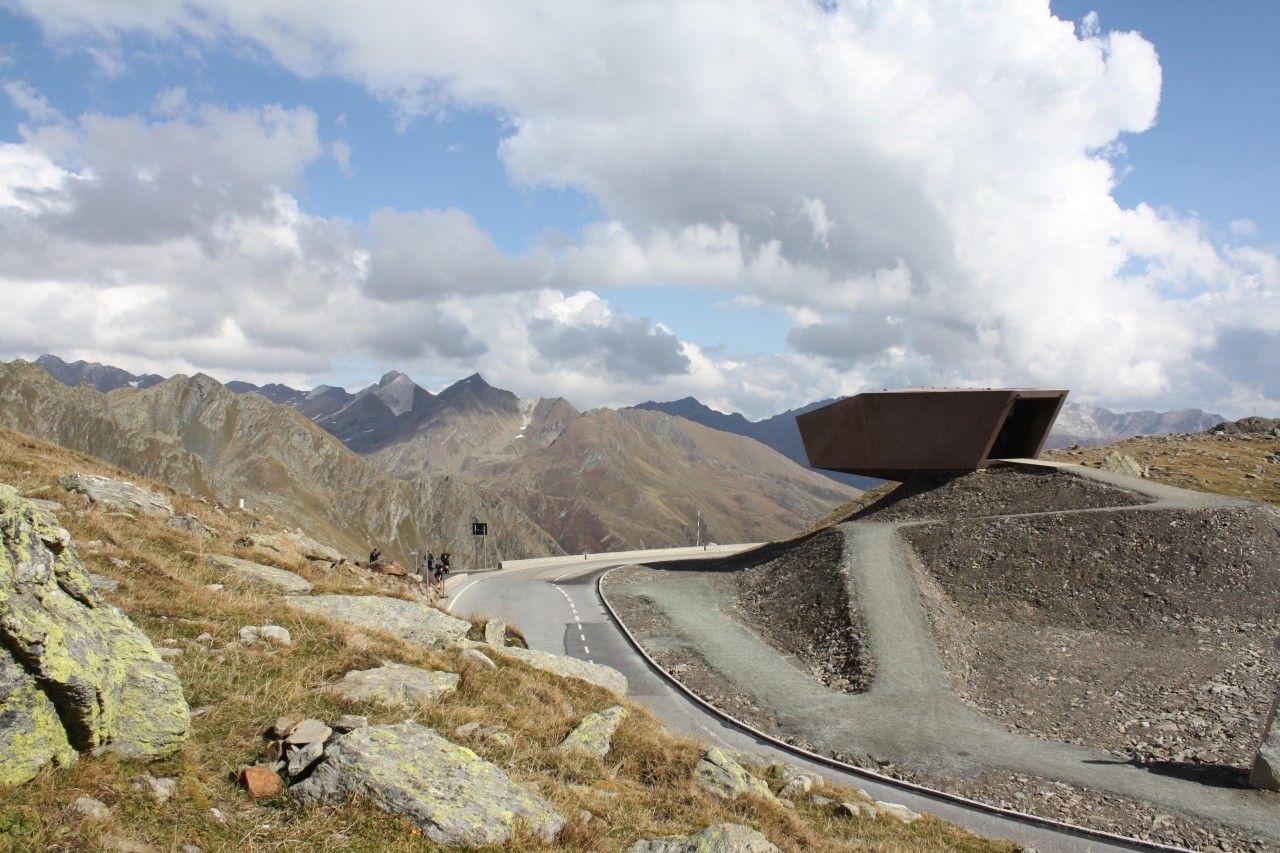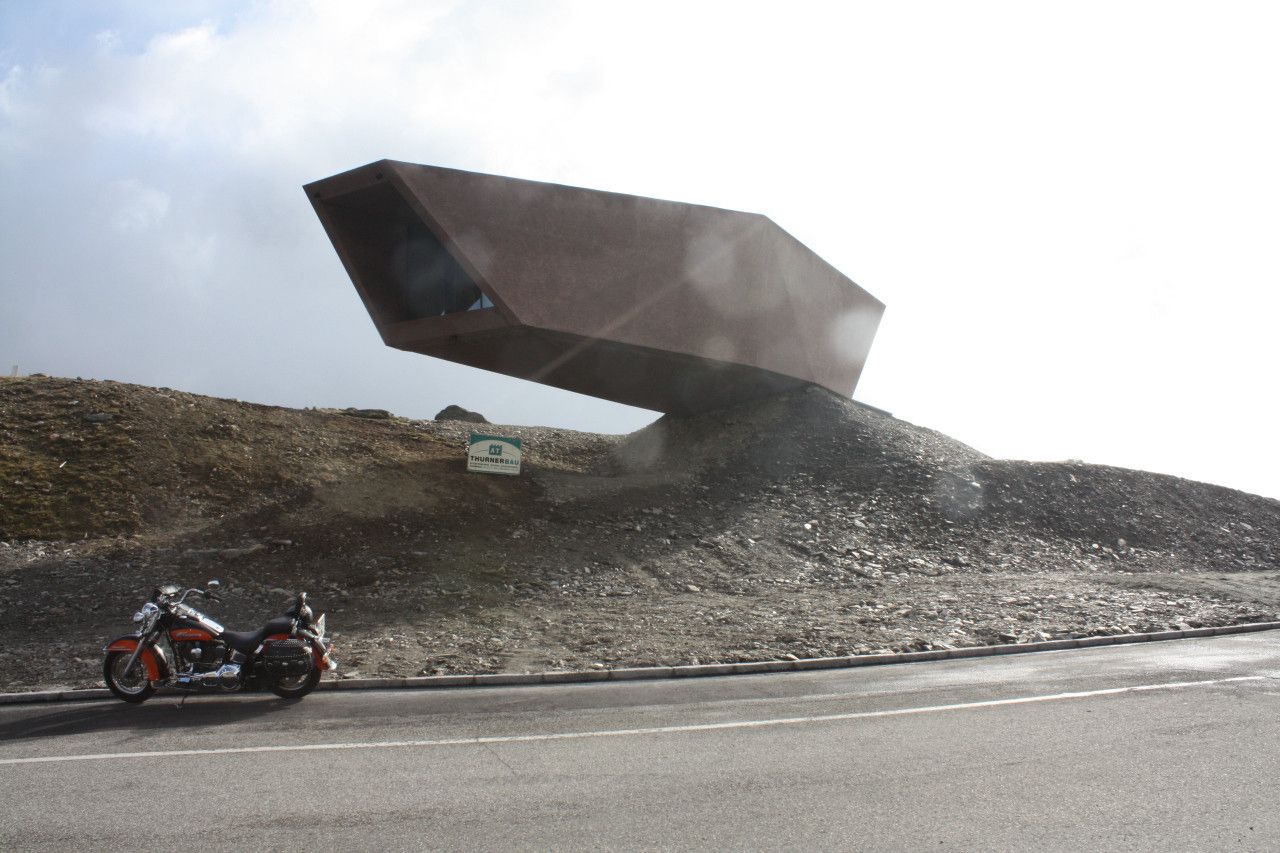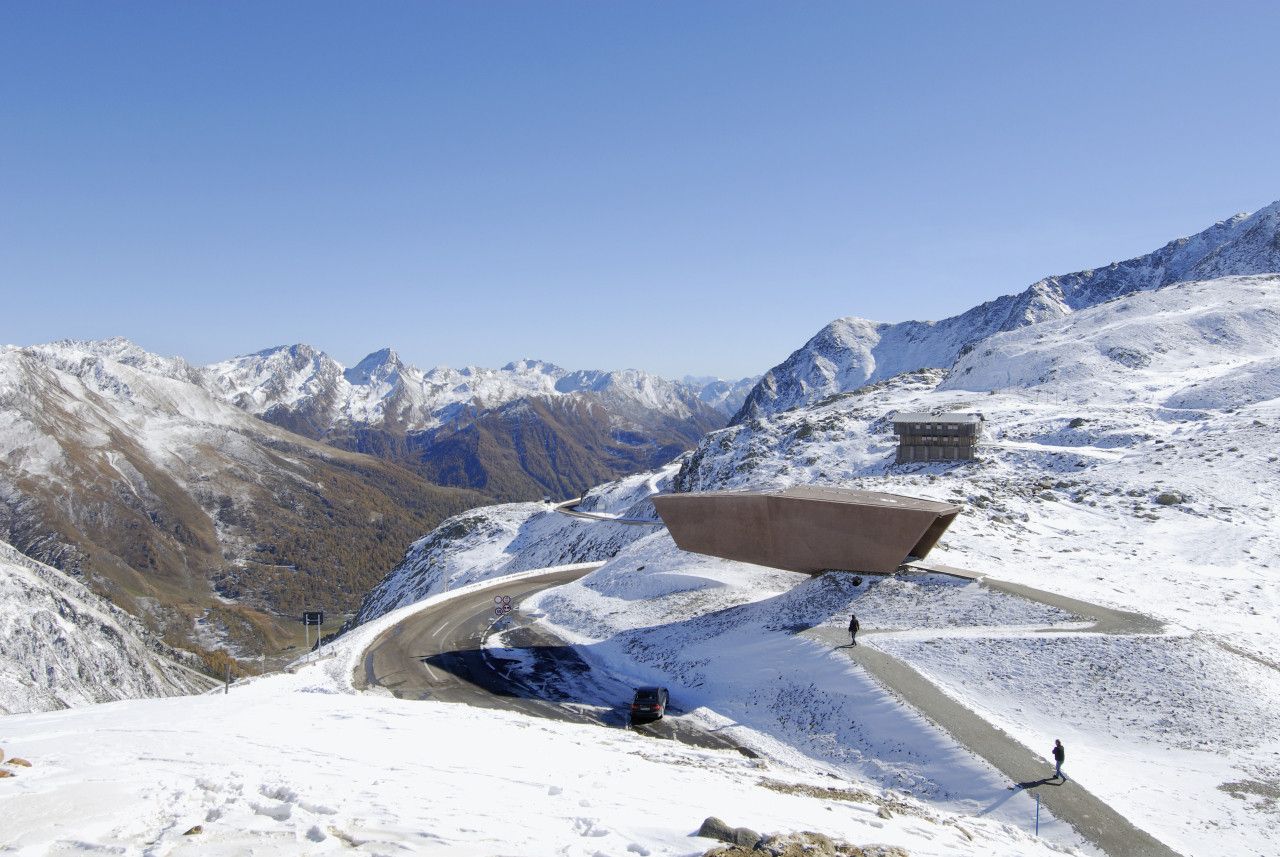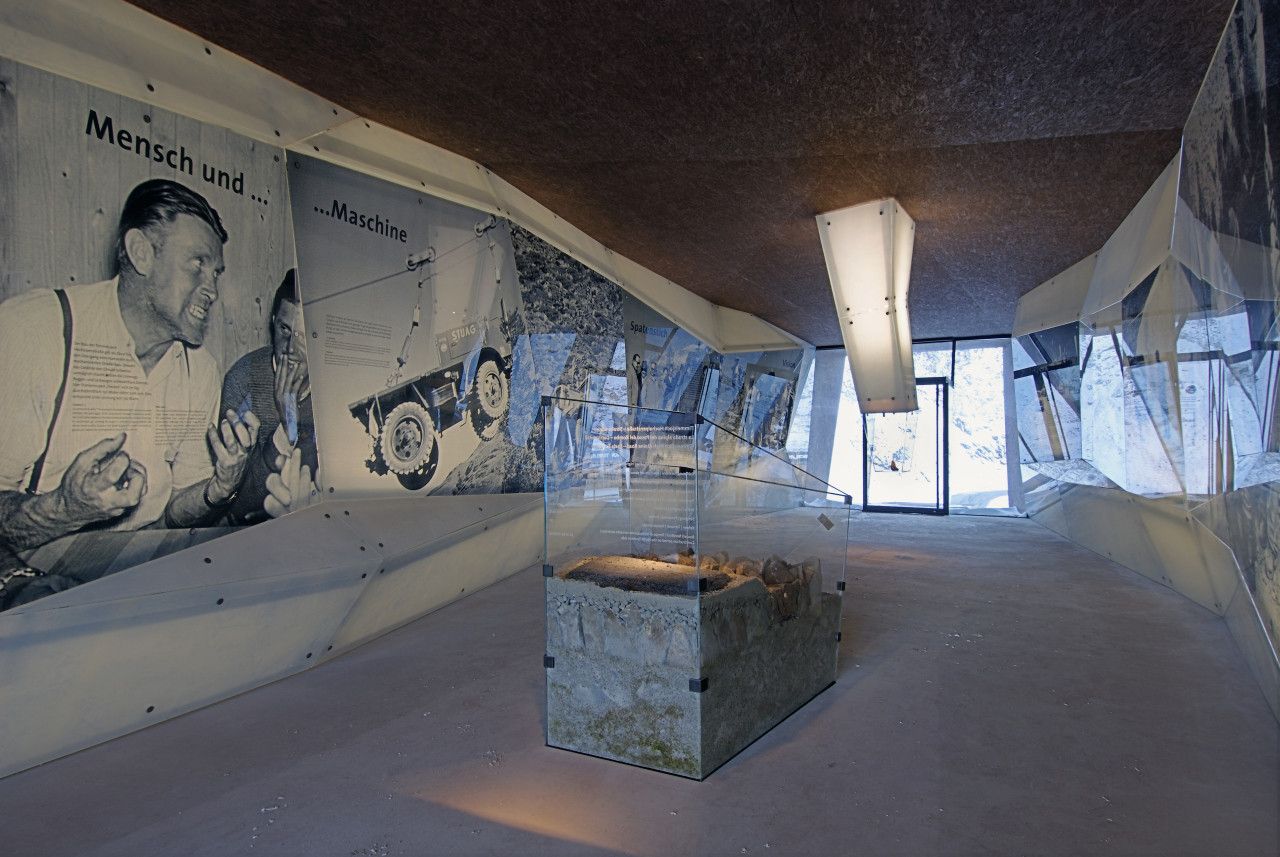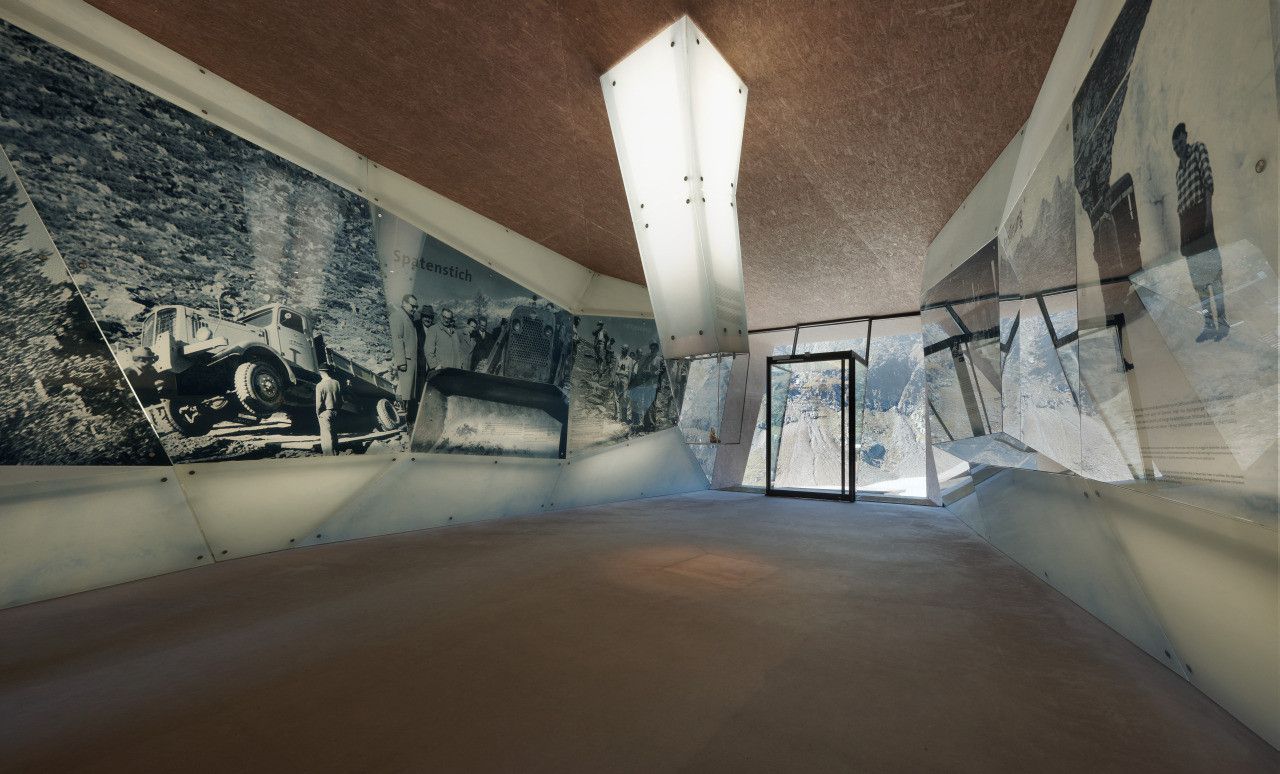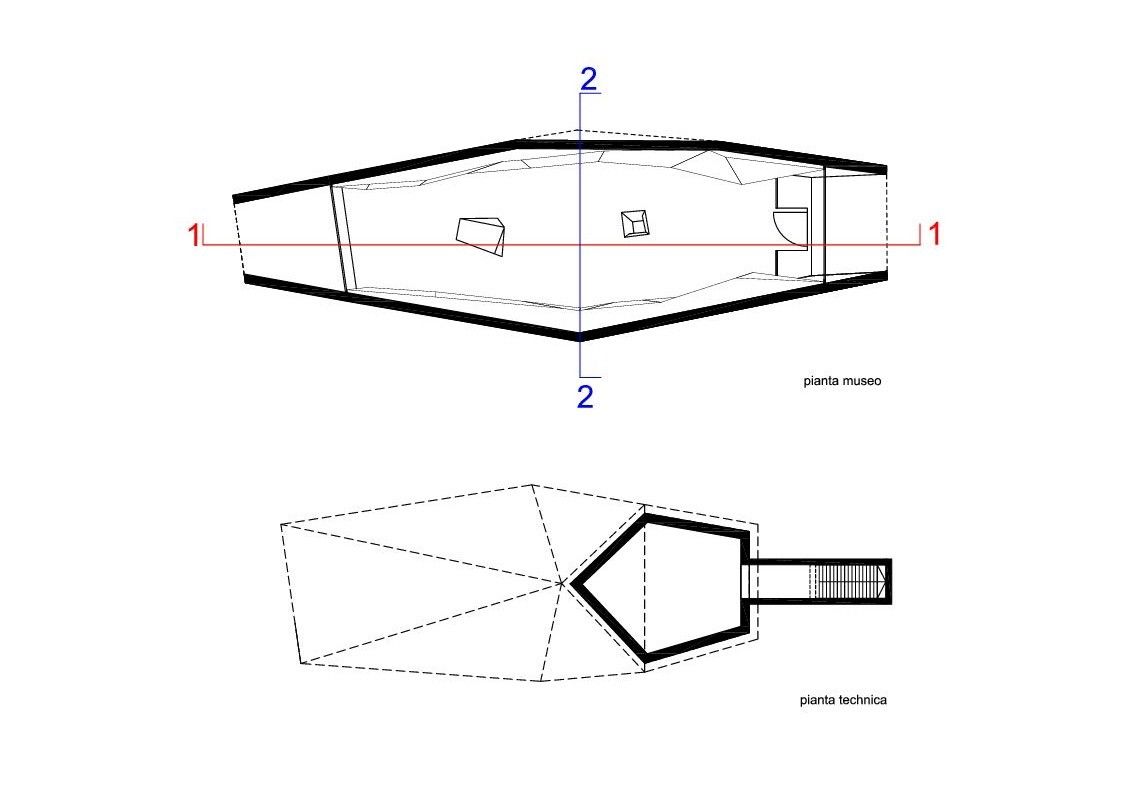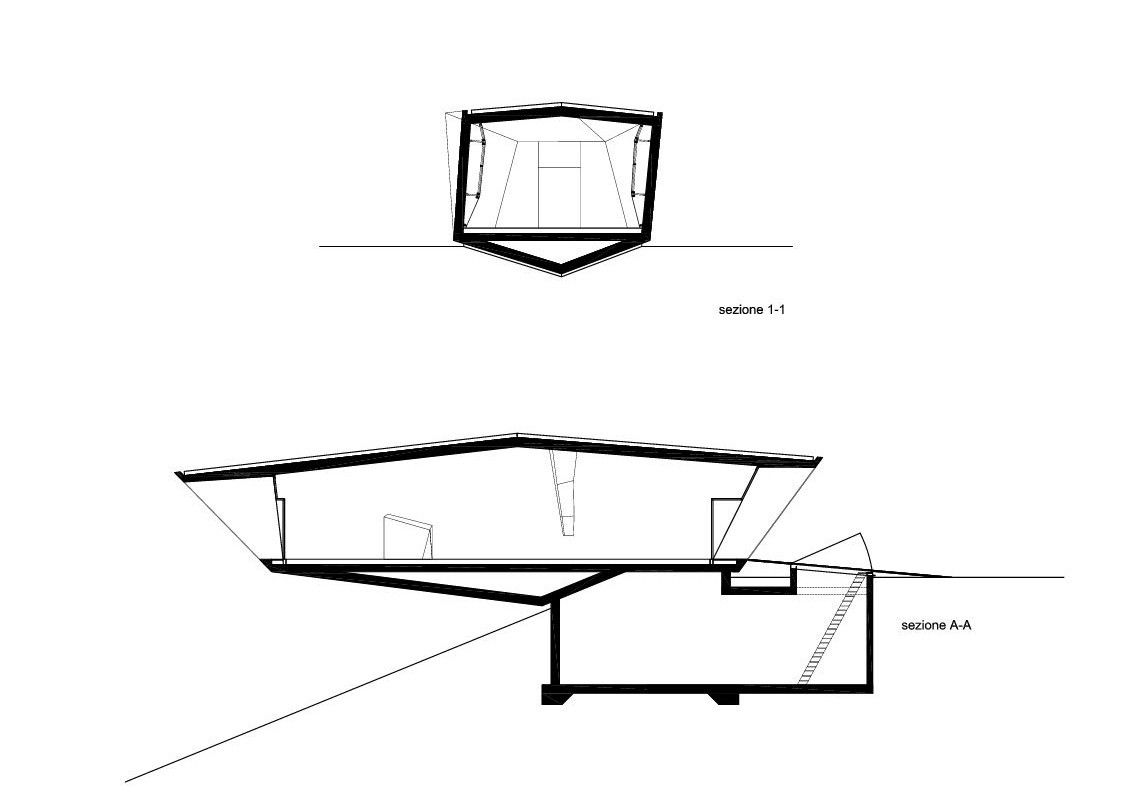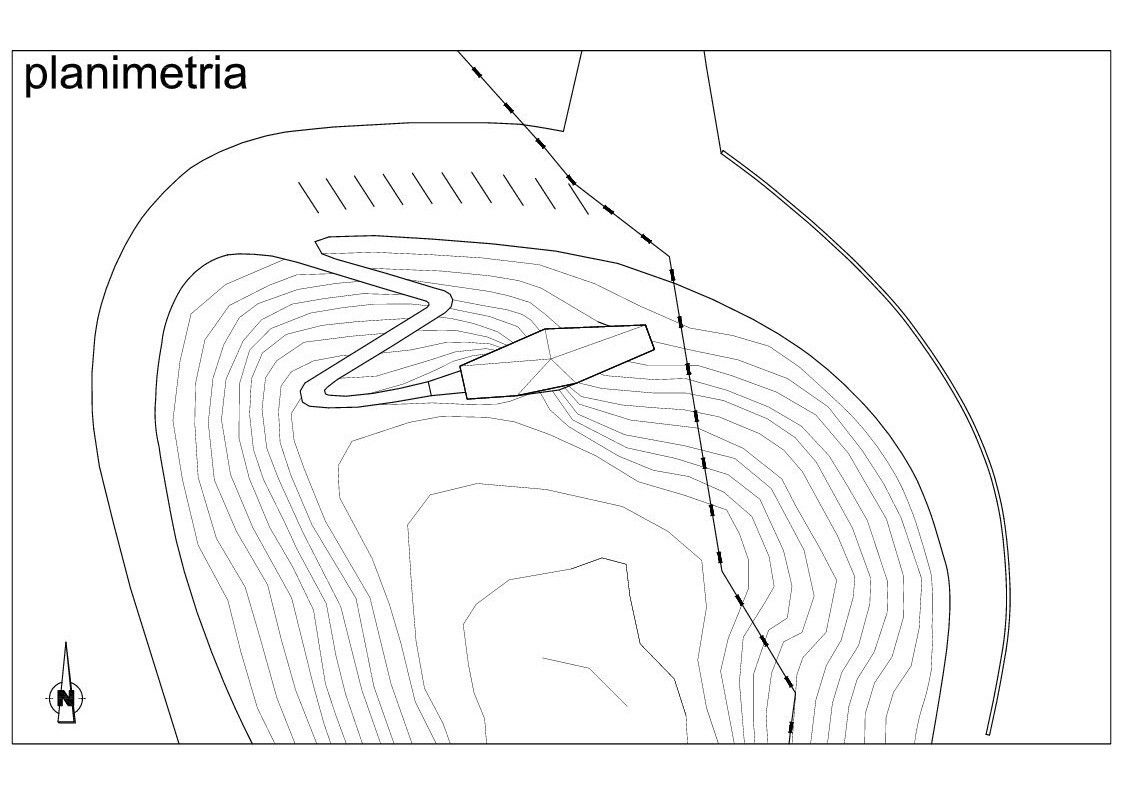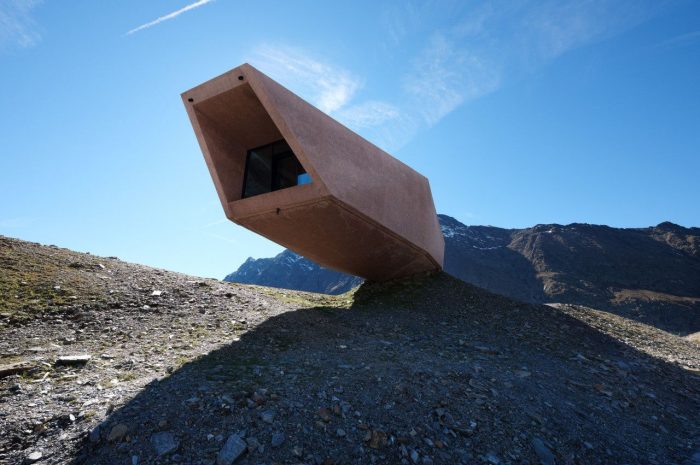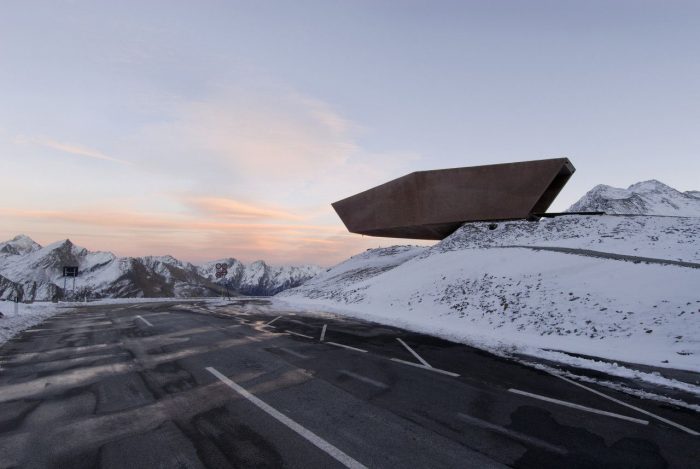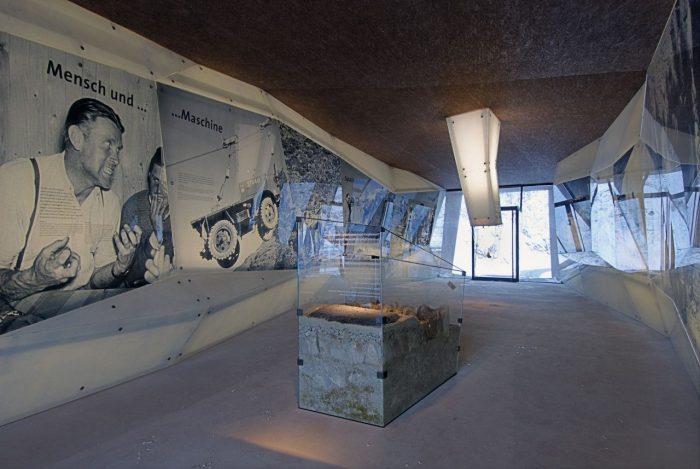Italian architect Werner Tscholl has designed ‘Pass Museum’, a small A Cantilevering shelter placed atop the highest point of the Timmelscjoch, Austria- the ‘Pass Museum’, designed by Italian architect Werner Tscholl, was built to celebrate the road’s fiftieth anniversary. Conceived as part of a collection of architectural sculptures placed along the train, the design references the form of a boulder jutting out beyond the land on which it sits. Situated at an elevation of 2,509 m, the new construction at the summit of the Timmelsjoch offers visitors quite an impressive sight. The museum, whose foundations are planted on the North Tyrolean side, protrudes 16 metres into South Tyrol, is an “erratic boulder”.
Highlighting the pioneers of the high alpine road and their accomplishments, the monolithic museum takes on a faceted form which lends a geometric character to the exterior. The solid impression is further achieved by an earth-tone finish drawn from the palette of the surrounding mountainscape. The rocks and boulders around the Timmelsjoch provided the inspiration for the museum’s design. The archietct didn’t want to taint the mountainsides with any additional colour.
Open on both ends as a singular space, the architectural sculpture also acts as a look-out,directing views from the inside out towards the non-glaciated indentation in the alpine ridge.The internal volume is informed by the carved shape of the exterior, uniform in palette and atmosphere for a seamless experience of the Timmelscjoch. Glass covers the internal walls of the building and is faceted to resemble the inside of an icy cave. The erratic interior delivers what the Pass Museum’s exterior promises. Awaiting visitors is an “ice cave” made up of floor-to-ceiling glass formations. The historical pictures printed on the glass, offer a striking insight into the arduous construction of the pass and the outstanding feat of achievement of the road’s pioneers. A glass cabinet at the centre of the museum exhibits a scale model of the pass, while images behind the glass explain its history.
